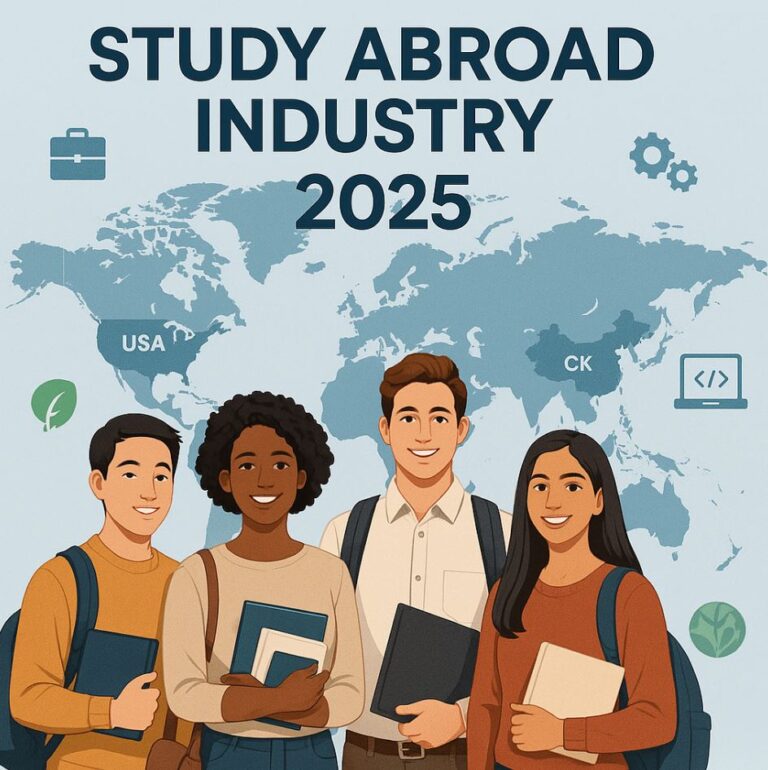The United States Education Scholarship Program 2025 presents an unparalleled opportunity for students worldwide who aspire to pursue higher education in one of the world’s most advanced academic environments. This comprehensive guide provides in-depth insights into the scholarship landscape for 2025, detailing eligibility criteria, application processes, types of scholarships available, and key opportunities to maximize chances of success. Our aim is to equip prospective applicants with all necessary information to confidently navigate the competitive scholarship arena and secure funding for their educational journey in the U.S.
Overview of US Education Scholarships in 2025
The US education scholarship programs in 2025 encompass a diverse array of financial aid options, including merit-based scholarships, need-based grants, government-sponsored awards, private scholarships from foundations, and institutional grants from colleges and universities. These scholarships serve to reduce the financial barriers to accessing world-class education in the U.S., which consistently ranks among the top destinations globally for higher learning due to its innovative research facilities, distinguished faculty, and multicultural academic community.
Applicants should understand that scholarships vary widely in scope—some cover full tuition fees, while others provide partial funding for living expenses, books, or specific academic projects. The US government, state agencies, universities, and private organizations collectively contribute to this vast scholarship ecosystem, ensuring there are programs suited for diverse academic fields and student backgrounds.
Types of US Education Scholarships for 2025
1. Federal Government Scholarships
The U.S. federal government offers several prestigious scholarship opportunities to international and domestic students alike. Among the most notable is the Fulbright Program, which supports graduate students, scholars, and professionals to undertake advanced study, research, or teaching assignments in the U.S. The program emphasizes cultural exchange and academic excellence.
Additionally, there are National Science Foundation (NSF) fellowships and other government grants targeted at STEM (Science, Technology, Engineering, Mathematics) disciplines. These are highly competitive but provide substantial funding covering tuition, research, and stipends.
2. University-Specific Scholarships
Many U.S. universities allocate significant funding for scholarships, tailored both for domestic and international students. These range from full-ride scholarships that cover tuition, room, board, and fees, to departmental scholarships based on academic merit or specific talents. Examples include:
- Harvard University’s Financial Aid Program, which offers need-based aid with generous coverage.
- Stanford University’s Knight-Hennessy Scholars Program, which provides full funding to graduate students demonstrating leadership potential.
Applicants should carefully review each university’s financial aid page and understand deadlines, required documentation, and criteria for each scholarship program.
3. Private and Foundation Scholarships
Private organizations and foundations contribute a substantial portion of scholarship funds. Entities like the Gates Millennium Scholars Program or the Jack Kent Cooke Foundation Scholarship are aimed at high-achieving students with financial need. These scholarships often have stringent eligibility requirements but reward academic excellence, leadership, and community involvement with comprehensive funding packages.
Eligibility Criteria for US Education Scholarships 2025
Academic Excellence
Almost all scholarships demand strong academic credentials. This includes a high GPA, standardized test scores (such as the SAT, ACT, GRE, or TOEFL/IELTS for non-native English speakers), and relevant coursework. Some scholarships target students in specific disciplines, such as engineering, medicine, social sciences, or humanities.
Financial Need
Many scholarships require demonstration of financial need, verified through documentation such as family income statements, tax returns, and affidavits. Financial aid offices often assess need to ensure resources are directed to students who require assistance the most.
Leadership and Extracurricular Involvement
Scholarships frequently seek candidates who show leadership potential and active participation in extracurricular activities. Community service, internships, research projects, or involvement in student organizations enhance an applicant’s profile significantly.
Citizenship and Residency Status
Certain scholarships restrict eligibility by nationality or residency status. While many programs welcome international students, others may prioritize U.S. citizens or permanent residents. International applicants should confirm eligibility before applying.
How to Apply for US Education Scholarships in 2025
1. Research and Identify Suitable Scholarships
Prospective students should begin by compiling a list of scholarships aligned with their academic interests, financial need, and nationality. University websites, scholarship databases like Fastweb and Scholarships.com, and official government portals provide searchable listings.
2. Prepare Required Documentation
Common documents include:
- Academic transcripts and certificates
- Standardized test scores
- Letters of recommendation from teachers, mentors, or employers
- Personal statement or scholarship essay
- Proof of financial need (if applicable)
- Resume highlighting achievements and extracurricular activities
Ensuring all documents are accurate, well-organized, and submitted before deadlines is critical.
3. Write a Compelling Scholarship Essay
The essay is often the decisive factor. It should clearly articulate the applicant’s educational goals, reasons for choosing the U.S., career aspirations, and how the scholarship will help achieve them. Tailoring essays to each scholarship’s unique mission and values is essential for standing out.
4. Submit Applications Timely
Many scholarships have strict deadlines, sometimes months in advance of academic terms. Missing deadlines results in automatic disqualification. Keeping a calendar and tracking progress on each application is highly recommended.
Key Opportunities and Benefits of US Education Scholarships
Full Financial Coverage
Many US scholarships cover full tuition, accommodation, health insurance, and sometimes travel costs. This comprehensive support reduces the financial burden and allows students to focus fully on their studies.
Access to Elite Institutions
Scholarships open doors to prestigious universities that might otherwise be financially inaccessible. This access translates into superior academic training, exposure to cutting-edge research, and invaluable networking opportunities.
Professional and Personal Development
Scholarship recipients often gain access to mentoring programs, leadership workshops, and exclusive internships. These enrich the overall educational experience, making scholars more competitive in the global job market.
Cultural Exchange and Global Networking
Many scholarships, especially government-sponsored ones like Fulbright, emphasize cultural exchange. This broadens students’ global perspectives and fosters lifelong international connections.
Common Conditions and Obligations of Scholarship Programs
Recipients must typically maintain a minimum GPA throughout their studies to retain scholarship eligibility. Many programs require annual progress reports and may restrict recipients from engaging in outside employment or require involvement in community or academic service.
Some scholarships, particularly government-funded ones, come with post-graduation service obligations, where scholars must work in their home country or a designated sector for a period. Applicants should fully understand these conditions before committing.
Maximizing Your Chances: Tips for Scholarship Success
- Start Early: Begin scholarship searches and preparations at least one year before the intended start date.
- Customize Applications: Avoid generic submissions; personalize each application to reflect the scholarship’s values.
- Seek Guidance: Use university financial aid offices, educational consultants, or online forums for advice.
- Build a Strong Profile: Maintain excellent academics, participate in extracurricular activities, and develop leadership skills.
- Proofread Carefully: Errors in applications can lead to rejection; meticulous review is essential.
Conclusion
The US Education Scholarship Program 2025 offers diverse, significant opportunities for students seeking quality education in America. Understanding the types of scholarships, eligibility criteria, application procedures, and obligations is crucial to successfully securing financial aid. With thorough preparation, attention to detail, and strategic application, aspiring scholars can unlock pathways to world-class education, career advancement, and global networks.
We encourage all applicants to take full advantage of these opportunities and begin their scholarship journey today to realize their academic and professional dreams in the United States.
Keywords: US education scholarship 2025, scholarships for studying in the US, US government scholarships, university scholarships US, financial aid US education, international student scholarships, US scholarship eligibility, scholarship application US, full-ride scholarships USA.













